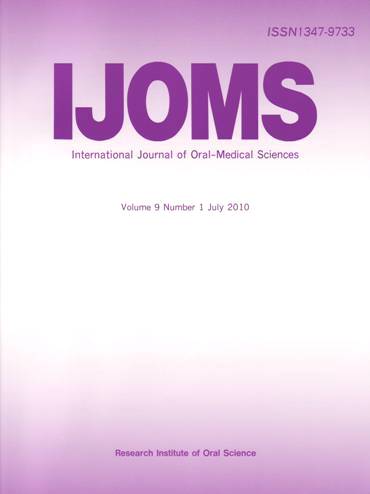Volume 12, Issue 1
Displaying 1-11 of 11 articles from this issue
- |<
- <
- 1
- >
- >|
Original Articles
-
2013Volume 12Issue 1 Pages 1-4
Published: 2013
Released on J-STAGE: September 04, 2013
Download PDF (89K) -
2013Volume 12Issue 1 Pages 5-12
Published: 2013
Released on J-STAGE: September 04, 2013
Download PDF (2001K) -
2013Volume 12Issue 1 Pages 13-20
Published: 2013
Released on J-STAGE: September 04, 2013
Download PDF (3198K) -
2013Volume 12Issue 1 Pages 21-28
Published: 2013
Released on J-STAGE: September 04, 2013
Download PDF (540K) -
2013Volume 12Issue 1 Pages 29-34
Published: 2013
Released on J-STAGE: September 04, 2013
Download PDF (323K) -
2013Volume 12Issue 1 Pages 35-40
Published: 2013
Released on J-STAGE: September 04, 2013
Download PDF (197K) -
2013Volume 12Issue 1 Pages 41-48
Published: 2013
Released on J-STAGE: September 04, 2013
Download PDF (1480K) -
2013Volume 12Issue 1 Pages 49-53
Published: 2013
Released on J-STAGE: September 04, 2013
Download PDF (267K) -
2013Volume 12Issue 1 Pages 54-60
Published: 2013
Released on J-STAGE: September 04, 2013
Download PDF (160K) -
2013Volume 12Issue 1 Pages 61-64
Published: 2013
Released on J-STAGE: September 04, 2013
Download PDF (2040K)
Case Reports
-
2013Volume 12Issue 1 Pages 65-71
Published: 2013
Released on J-STAGE: September 04, 2013
Download PDF (4691K)
- |<
- <
- 1
- >
- >|
